'Camel Up' review to make a lot of money in anticipation of victory or defeat in a big incandescent camel race in the desert

Hobby Japan has released a renewed version of the
Camel Up (2019 Edition) | | ANALOG GAME INDEX
http://hobbyjapan.games/camel_up_2019/
◆ Contents & game preparation
The package looks like this.

The target age is 8 years old and over, the number of players is 3 to 8, and the play time is assumed to be 30 minutes.
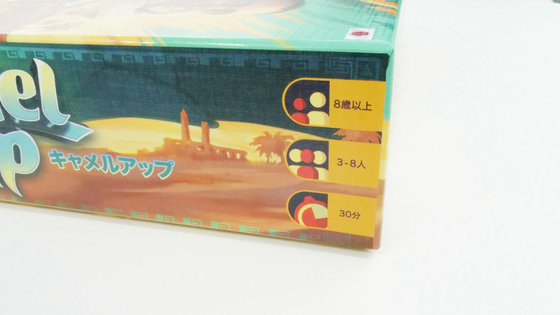
Inside the box are a game board, a rule manual, and each component.

When I opened the game board, palm trees would surely grow like a pop-up book. The 16-square race field drawn on the game board starts from 1 square and advances clockwise.
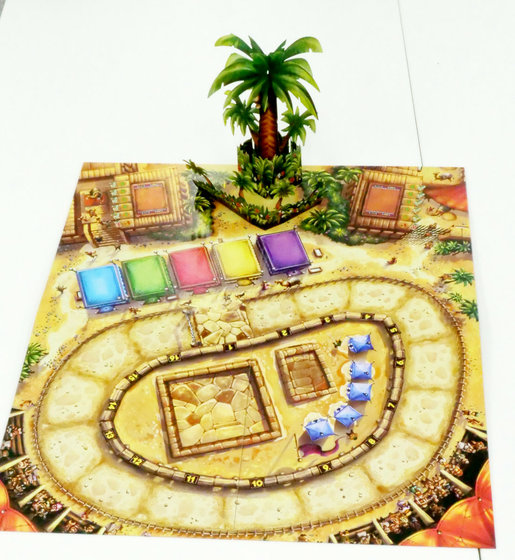
The components fit neatly in the box.
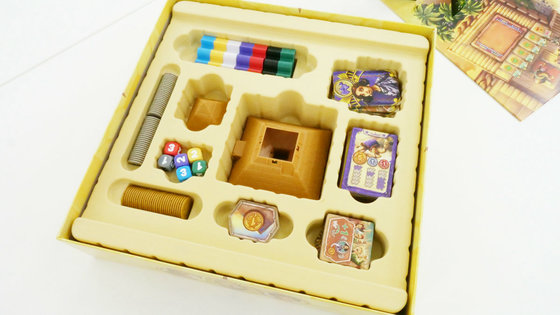
First, place the five-color leg voting tiles on the game board.

The leg voting tiles should be stacked in the order of the images below.
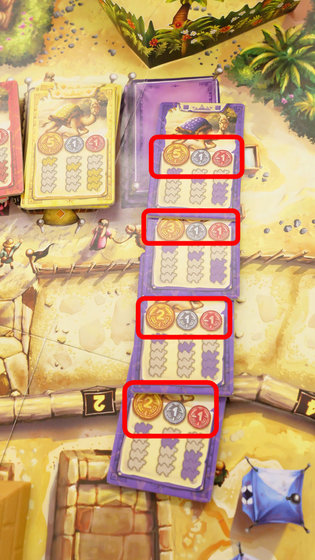
Next, place 5 pyramid tiles on the game board.
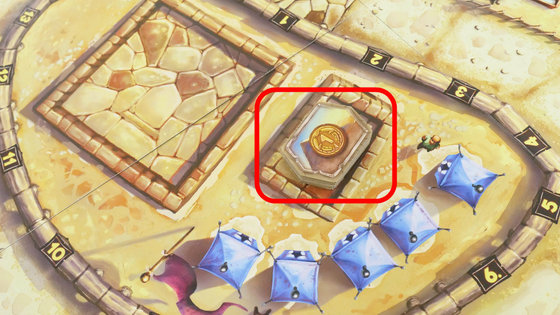
The coins you get from winning or losing a camel race look like this. The unit is Egyptian pound (EP), and 1EP and 5EP coins are available.

Place coins used in the game next to the game board. Coins are exchanged frequently during the game, so it is recommended to keep them in a small plate.
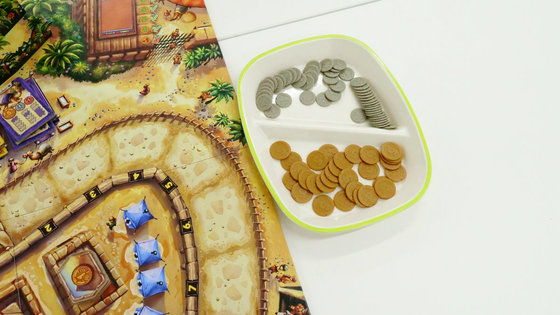
Then distribute the final prediction card and spectator tiles to the players. This time we will play with 8 people.
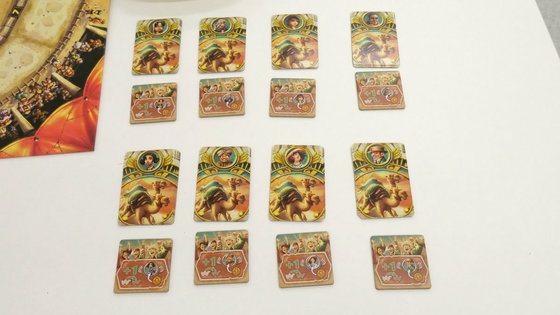
In addition, cooperation cards will be distributed to each player. The cooperation card is placed at hand with the side on which the player's face illustration is drawn facing up.
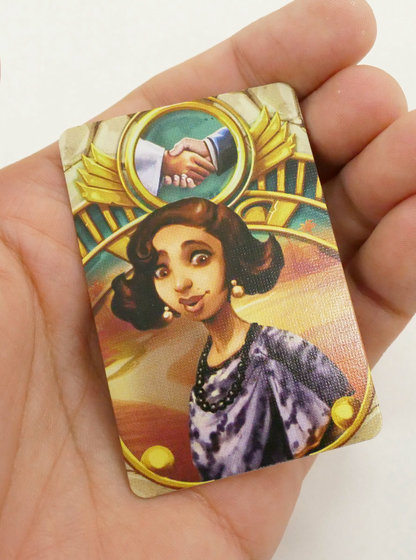
Five camel colors running around the race track and dice (dice) corresponding to each color. The dice are 6-sided dice with 2 rolls of 1, 2 and 3 on each side.
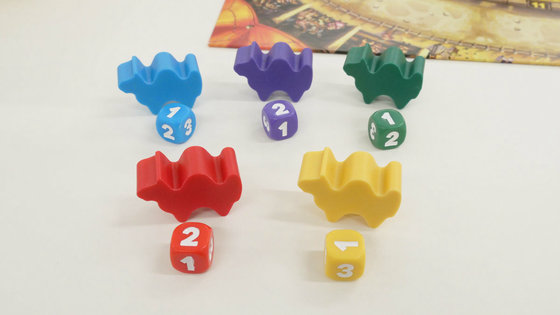
In preparation for the game, roll the five-color dice ...
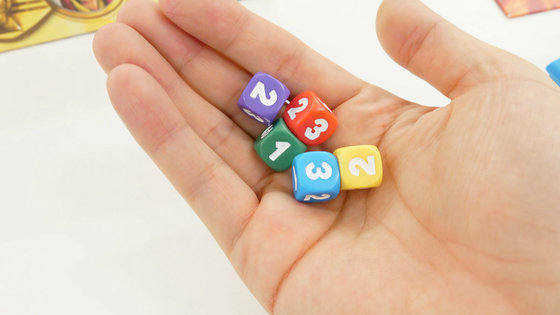
Place camels of the same color as the dice on the same game board square as the roll. Camels in the same square are stacked. The camel shape is designed to overlap perfectly. In addition, it is OK to decide which color camel to put on top.
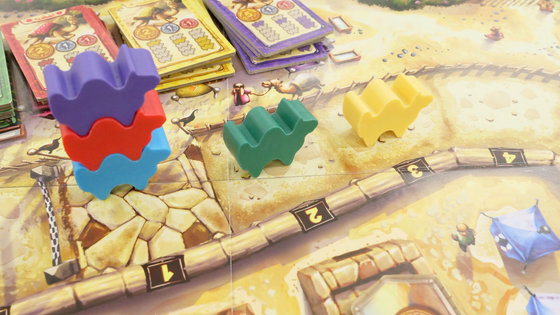
Further disturbing the race are the black and white 'squid camels'.
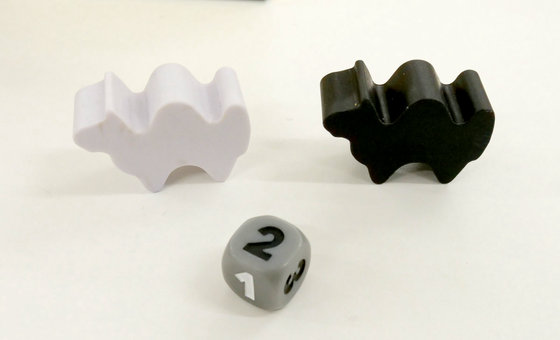
For squid camels, 4-sided dice with 1st, 2nd and 3rd rolls written in black and white are supported, and like the 5-color camels, they are lined up in front of the goal of the game board according to the dice rolls. However, the squid camel has the role of making a big runaway in the opposite direction of the race, so arrange it so that it goes counterclockwise.
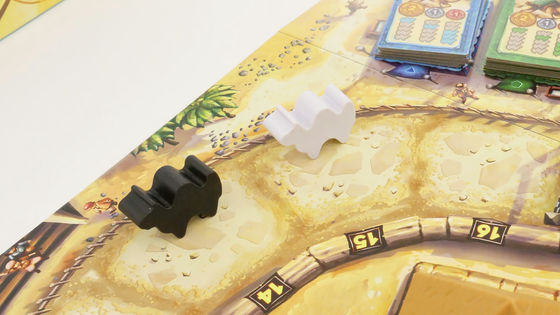
And the dice pyramid rises in the middle of the race track.

The zenith of the pyramid is removable ...
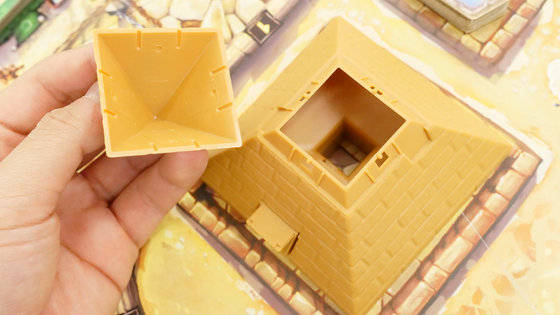
Holds 6 types of dice inside. In the game, you use this dice pyramid to roll the dice. In Camel Up, it is possible to place a bet on the result of a section called 'leg' in addition to winning or losing the race, and the legs are separated by 'until 5 of the 6 dice are rolled'.
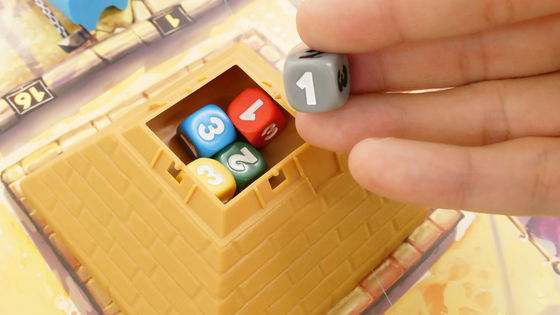
The start player marker received by the start player is
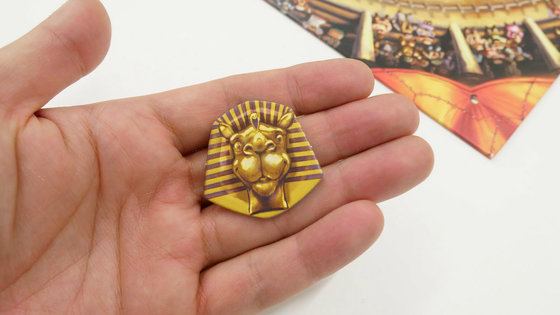
◆ I tried playing with 8 people
The player turns clockwise. In 8-player play, each player takes one of five actions during his turn: 'place spectator tiles, ' ' acquire pyramid tiles, ' ' acquire leg voting tiles, ' ' cooperate, ' and ' final race predictions.' Executable. The game ends when one of the five colored camels goes around the race track, and the player who earns the most money wins.
'Arrangement of spectator tiles' allows you to place one spectator tile that each player has on an empty space in the race track. However, it cannot be adjacent to other spectator tiles. The number '+1' or '-1' is written on the tile, and either one is placed facing the front.
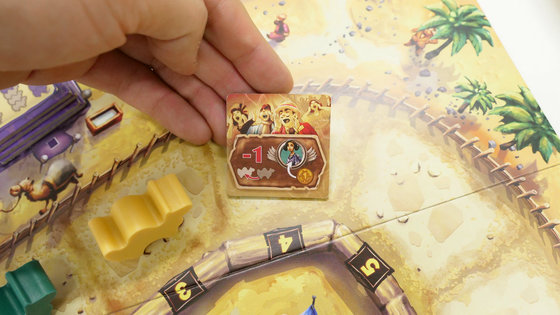
'Acquisition of Pyramid Tile' acquires the pyramid dice placed on the game board ...
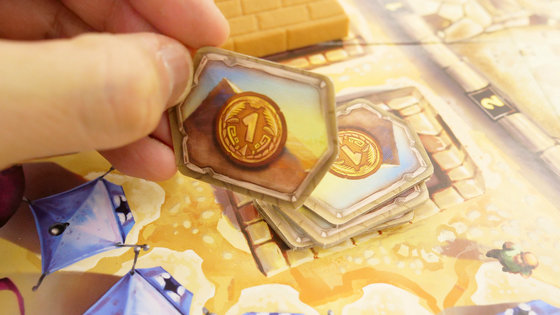
Pick up the dice pyramid. Turn the dice pyramid upside down and shake it well, then turn it over again and press the button on the side of the pyramid ...
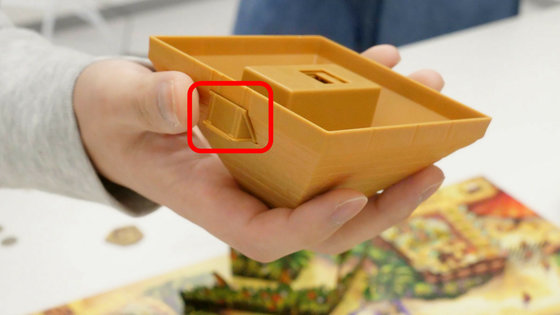
One die is rolled. This time it's a blue die with a roll of 3. The rolled dies are lined up on the game board.
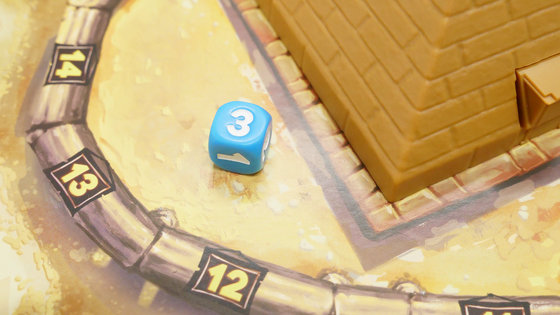
Follow the dice and move the blue camel 3 squares. When moving a camel, if there is a camel on it, it will move with it, which is a characteristic of the camel-up race.
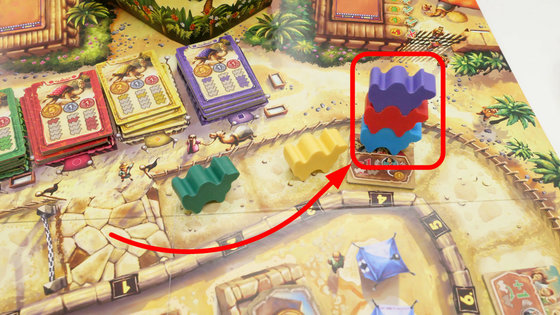
However, three steps ahead, the '-1' spectator tile was placed. If the spectator tile is placed on the square where the camel stopped, '+1' will advance 1 square, and '-1' will return 1 square. Therefore, the blue camels go back one square and ride on the yellow camels. If camels overlap in the same square, the higher the camel, the higher the ranking. In other words, in the image below, the camel that is provisionally ranked 1st is a purple camel.
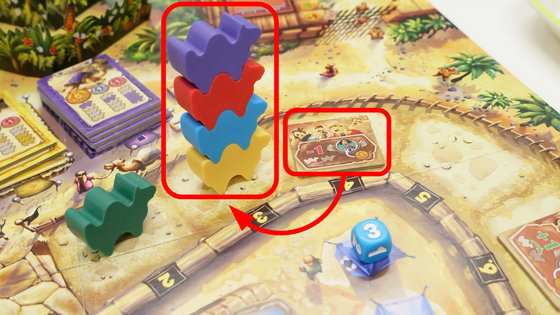
'Acquisition of leg voting tiles' allows you to get one of the leg voting tiles placed on the game board according to the color of the camel that you expected to be number one on that leg. For example, a player who wins the following leg voting tiles will get 5 EP if the purple camel is 1st in the leg and 1 EP if it is 2nd. However, if you are not expected and you are in 3rd place or lower, you will have to pay 1 EP.
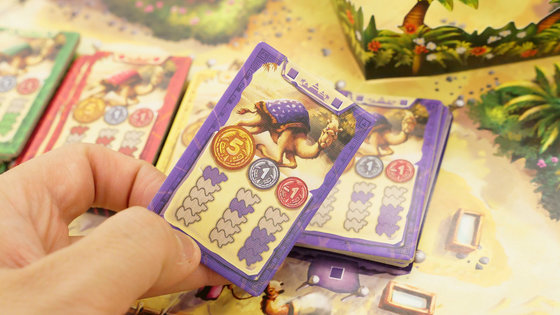
Since the winning amount of the leg voting tile gradually decreases, the leg voting tile is basically first come, first served. However, by 'cooperating' you can only share one leg voting tile with other players. To apply for cooperation, exchange your cooperation card for the other person's cooperation card, turn it over on the back side with the illustration of the handshake, and keep it at hand. In addition, although it is 'cooperation', the player who received the offer cannot decline the application.

For 'Final Prediction of Race', select the camel-colored card that will eventually be ranked 1st or lowest in this race from the final prediction cards you have.
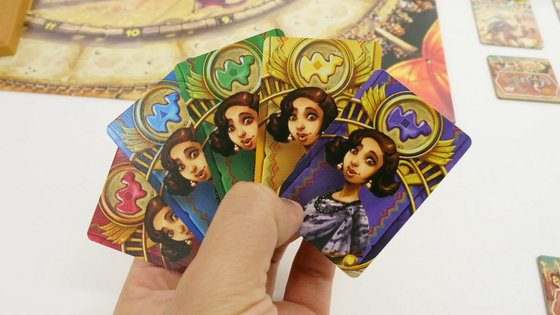
The player who hits the 1st place camel first gets 8 EPs, the player who hits the 2nd place camel hits 5 EPs, and so on. , The 5th and subsequent ones are lined up side by side in 1EP. Also, if you vote but you are not, -1EP. In order to make a lot of money, it is important not only to guess, but to anticipate earlier than other players.
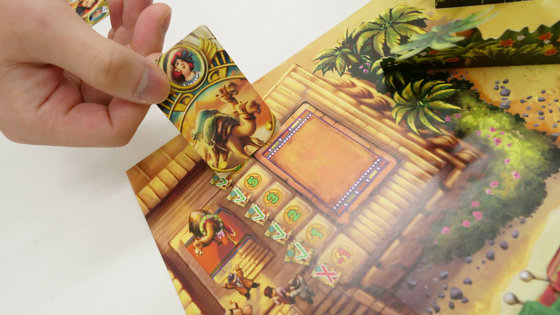
When 5 of the 6 dice in the Dice Pyramid line up on the game board, the leg ends at that point and the leg voting tiles are checked.

For this leg, the result was purple in 1st place, red in 2nd place, blue in 3rd place, yellow in 4th place, and green in 5th place.
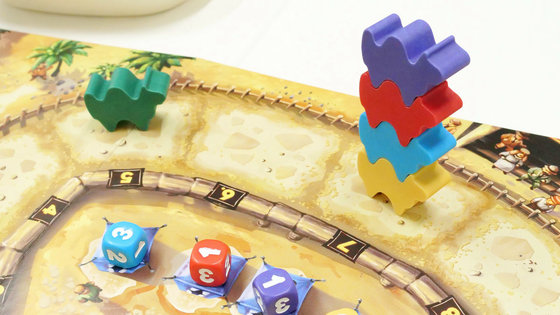
The following players have won one Pyramid tile and one red leg voting tile. Pyramid tiles got 1 EP per piece, and the red camel was in 2nd place, so they got 1 EP. I was able to get a total of 2 EPs.
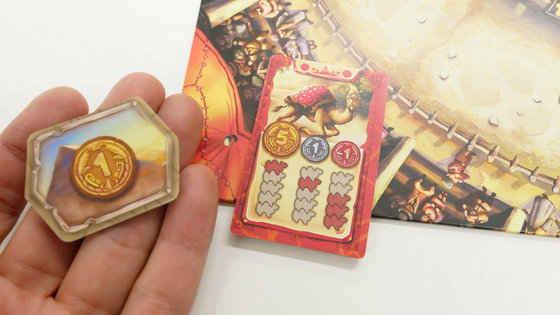
Below is a pattern in which the two players who won the purple leg voting tile, which was the first in the leg, cooperated with each other. The player on the left has won 2 EPs on his leg voting tile and 5 EPs on the leg voting tile of the player on the right who cooperated, and has succeeded in earning a total of 7 EPs. Similarly, the player on the right also gets 7 EPs in total with his leg voting tile and the leg voting tile of the player on the left. In addition, the leg voting tile will pay -1 EP if the target camel is 3rd or less, but since EP acquisition by cooperation is 'OK with or without', if it is negative, you can pass through. Originally, you can apply for cooperation at no cost, so if you do it well, you can unilaterally parasitize the other party's vote.

After all players have settled their legs, return the leg voting tiles and pyramid tiles to the game board, collect the spectator tiles, and put all the dice in the dice pyramid. This leg is repeated until one of the camels goes around the race track.
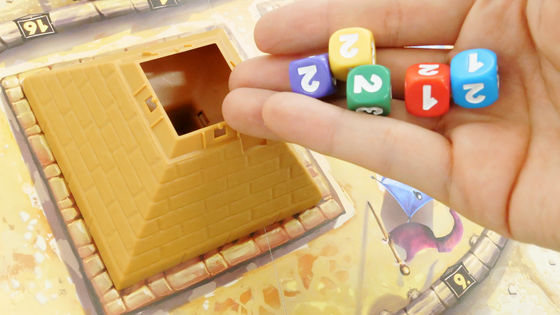
The following scene is where the last yellow camel got on the black squid camel running in reverse.
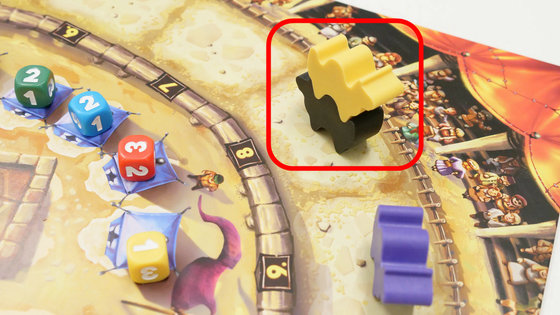
When the dice were rolled on the next turn, a black 1 was rolled.
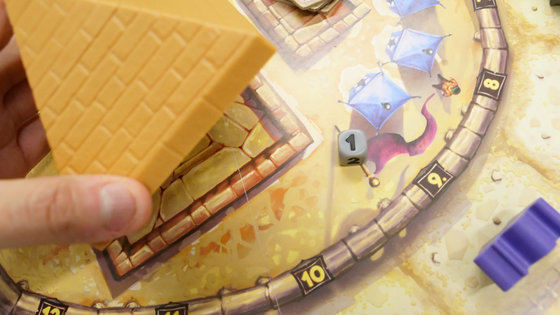
The black camel runs backwards for one square. Of course, the yellow camel on top will also be returned by one square.

The next player, convinced that 'this will be the bottom of the race for almost yellow camels,' puts the yellow final prediction card on the game board in 'Final Prediction of Race'.

However, after that, the dice were rolled and a yellow three was rolled.
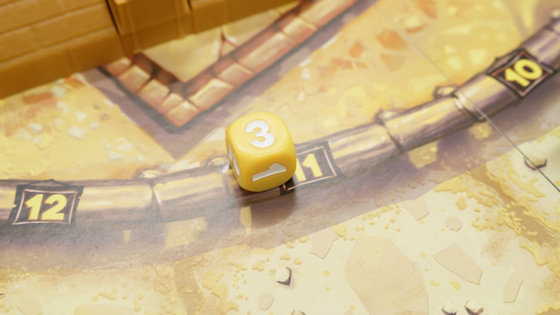
As the yellow camel advanced three times, the yellow camel, which was thought to be at the bottom, got on top of the green camel that was just three squares ahead at that time. With this, the provisional bottom will be the green camel below.
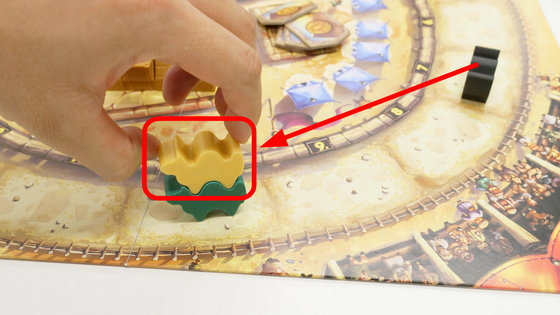
In the end, the camel group that was running at the front made one lap and the race ended without the green camel being able to overtake the yellow camel. The result was that 1st place was purple, 2nd place was red, 3rd place was blue, 4th place was yellow, and 5th place was green.
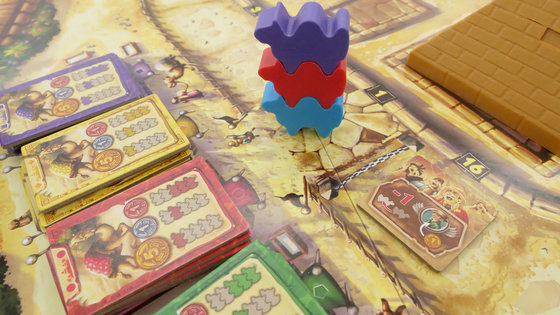
Looking at the final prediction card, the same player brilliantly hit the 1st place and the lowest prediction first and got 16 EP. In the middle of the process, the player who earned each leg was dominant, but in the end, he made a big turnaround and won. In the case of a close battle, it is not possible to vote in a straightforward manner because it makes a difference whether or not you can make a good profit in the final forecast.
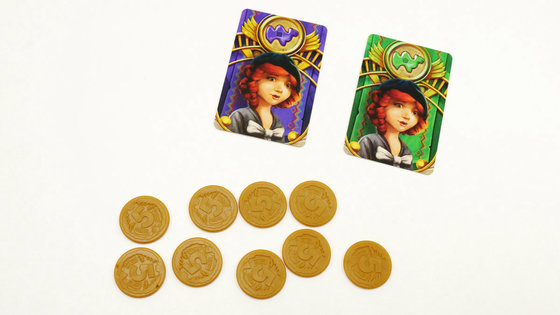
In another game, all the camels gather in one square and five of them overlap vertically.
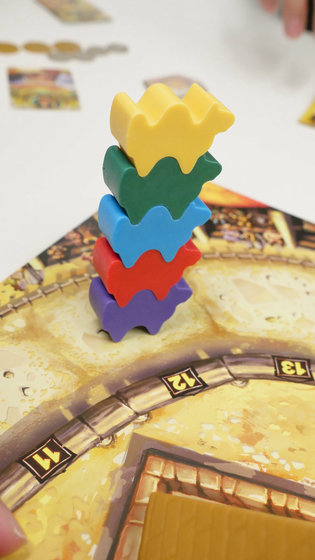
The camels had a dead heat until the end, but green and yellow camels jumped out in front of the goal.
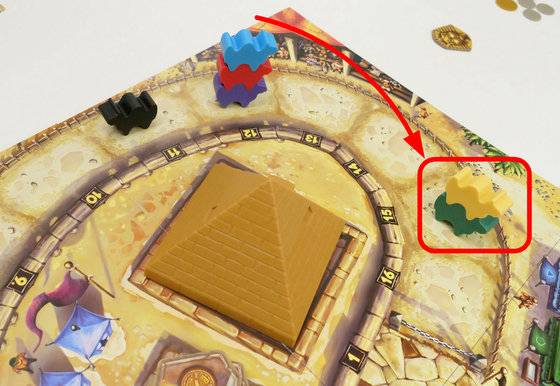
Everyone expected, 'Is this confirmed by the first yellow and the lowest purple ...?' However, the dice that were subsequently rolled caused the blue camel to jump to the front and the red camel to be pulled away. All the editorial staff who are playing in a big upset at the end of the game are Ikki Ikyuu.
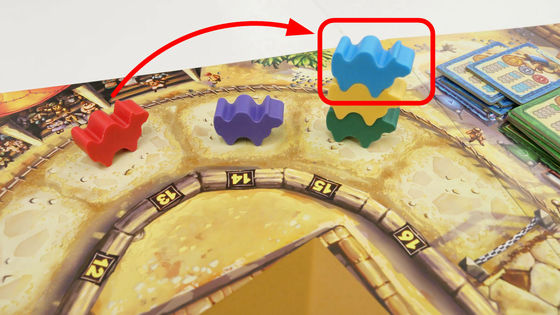
Then, with the blue camel on, the green camel advanced and the race was settled.

In addition, the player who hit the bottom perfectly is betting on the final forecast from the beginning of the race with no information at all, saying, 'If anything, I will hit it with luck from the beginning!' Was attracted.
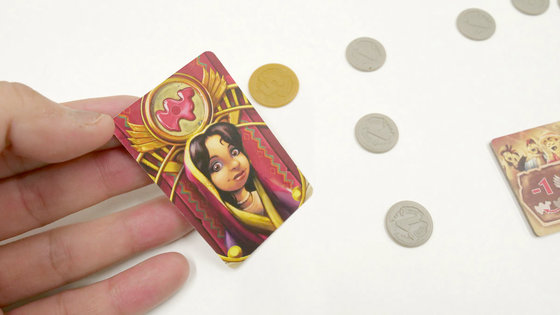
Camel Up is a general race betting rule such as horse racing that 'predict without risk and get a prize if you win' and 'pay in advance and if you win you will get a lot of money according to the magnification' Is different. However, it is unintentionally feverish to swallow and watch over the camel's ranking, which changes depending on the dice. It can also be theoretically predicted from the probability of dice and the position of the camel, and it is not a complete luck.
Of course, it is very important to read the dice rolls and the development of the race in order to win, but in the end the race depends on the probability of the dice, so believe in your luck as well as the theory and gamble. There is also a play that entrusts you. 'This is yellow is confirmed to be the 1st place ...' 'No, if red comes out, there is a possibility of reversal', etc., so each player's expectation flies on the board, so camel up is played with a lot of people making noise. It is recommended to do it.
Camel Up (2019 version) can be purchased at Amazon.co.jp. The price is 5136 yen including tax at the time of writing the article.
Amazon | Camel Up (2019 Edition) Japanese Edition | Board Games | Toys

Related Posts:







